How EVs Are Driving Towards A More Sustainable Future
Driving towards our goal of achieving carbon neutral operations by 2040, we’ve been busy testing and deploying zero-emission electric vehicles in some of the busiest cities in Asia Pacific, the Middle East and Africa.
Electrification holds the key to future mobility.
The world is rapidly transitioning to more sustainable solutions for transportation. Today, governments, businesses and service providers are all seeking greener ways to connect and power how people live and work.
At FedEx, our electrification journey goes way back. In 2003, we set a record for being the first delivery company in the world to use hybrid vehicles for pickup and delivery. And three decades ago, in 1994, we operated our first EV, a lead-acid battery-powered vehicle in California.
Since then, electric vehicle and battery technology have come a long way - so much so that it’s expected that by 2030, one in three vehicles sold will be electric. Traditional automakers are pivoting to hybrid or fully-electric vehicles, and public transportation and service vehicles are being reinvented in a bid to drastically reduce carbon emissions worldwide.
The world is rapidly transitioning to more sustainable solutions for transportation. Today, governments, businesses and service providers are all seeking greener ways to connect and power how people live and work.
At FedEx, our electrification journey goes way back. In 2003, we set a record for being the first delivery company in the world to use hybrid vehicles for pickup and delivery. And three decades ago, in 1994, we operated our first EV, a lead-acid battery-powered vehicle in California.
Since then, electric vehicle and battery technology have come a long way - so much so that it’s expected that by 2030, one in three vehicles sold will be electric. Traditional automakers are pivoting to hybrid or fully-electric vehicles, and public transportation and service vehicles are being reinvented in a bid to drastically reduce carbon emissions worldwide.
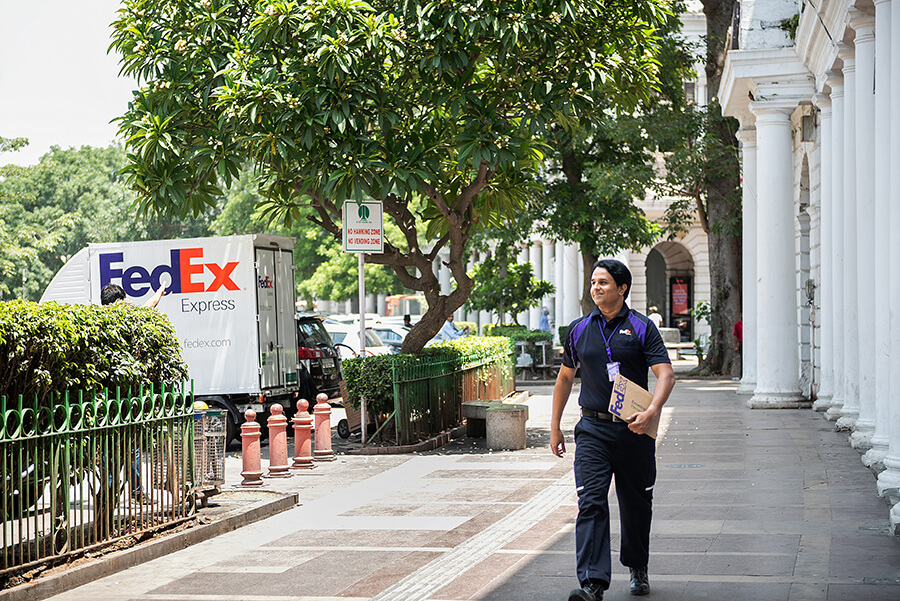
Our roadmap to sustainable transportation
At FedEx, we’ve committed to revolutionizing our sustainable operations over the next two decades, pressing ahead with our ambitious goal to be completely carbon neutral by 2040. This includes transforming our entire parcel pickup and delivery fleet to zero-emission electric vehicles.
These sustainability goals are ambitious. With more than 200,000 motorized vehicles in our fleet, we’re taking a phased approach to vehicle electrification. We also have plans to convert 50% of global pickup and delivery vehicle purchases to electric by 2025, increasing to 100% by 2030.
But how can we bring these plans to life across our global transportation network? And what do electric vehicle pickup and deliveries look like across different cities around the world? In this region, we’ve conducted trials and deployed EVs in key cities across Asia Pacific, Middle East and Africa. This paves the way for future roll-outs, with our largest EV fleet in the region based in China.
Read on to find out more:
India presses ahead with electric vehicle options
With a massive population and a reliance on road networks for inner-city transportation, India continues to address serious issues of urban pollution as a result of vehicle emissions. And these issues are set to intensify: by 2030, car ownership is projected to triple, rising to 10.5 million car sales annually.
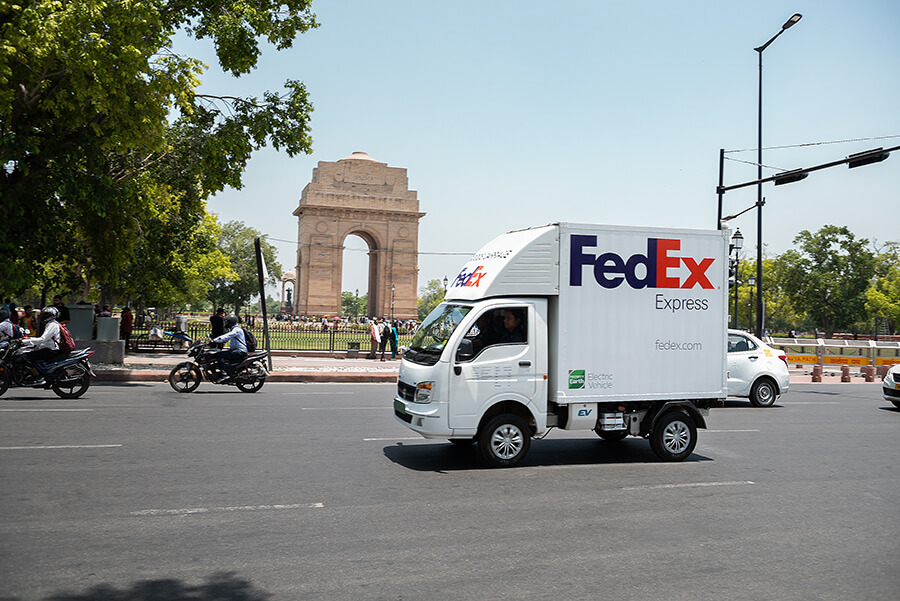
While around 8% of total greenhouse gas (GHG) emissions in India are from the transport sector, in Delhi, it exceeds 30%. To help tackle this issue, we’ve deployed 30 electric delivery vehicles in the city. Each is expected to help avoid more than 1.3 tons of carbon emissions annually and reduce fuel consumption and emissions equivalent to five passenger cars.
We’ve also introduced electric vehicles in Thailand. Focusing on how deliveries in the heavily congested Thai capital can be made greener in future, we’re taking another step in our long-term commitment to making the communities where team members live and work more sustainable.
EVs have also been deployed in Japan since 2016. In Tokyo, zero-emission, all-electric vehicles are part of a pickup and delivery fleet that also includes hybrid and natural gas-fuelled vehicles.
Not all our electric vehicles are vans or trucks. In Taiwan, we’ve rolled out electric tricycles for smaller urban deliveries, with a cargo capacity of up to 1,000 liters. In Europe, the US and Canada, couriers are whizzing around on e-bikes to drop off smaller packages too.
Addressing last-mile delivery from Bangkok to Beijing
We’ve also introduced electric vehicles in Thailand. Focusing on how deliveries in the heavily congested Thai capital can be made greener in future, we’re taking another step in our long-term commitment to making the communities where team members live and work more sustainable.
EVs have also been deployed in Japan since 2016. In Tokyo, zero-emission, all-electric vehicles are part of a pickup and delivery fleet that also includes hybrid and natural gas-fuelled vehicles.
Not all our electric vehicles are vans or trucks. In Taiwan, we’ve rolled out electric tricycles for smaller urban deliveries, with a cargo capacity of up to 1,000 liters. In Europe, the US and Canada, couriers are whizzing around on e-bikes to drop off smaller packages too.

China is the largest EV market in the world, leading the entire Asia Pacific region in the innovation and adoption of electric cars. In many Chinese cities, it's becoming increasingly common to see drivers charging their EV batteries. At FedEx, we operate 381 EVs in China, accounting for 13% of our local fleet.
We recently entered the Malaysian Book of Records for the world’s first cross-border delivery in an electric vehicle. The milestone journey from Malaysia to Singapore covered 406 kilometers and was completed with just a single charge.
We’re now using the insights gained from this trial to assess operational effectiveness for future cross-border pick-up and delivery operations. The trial also demonstrated about 100kg reduction in tailpipe CO2 emissions when compared to diesel-powered vans.
In the Middle East, governments and businesses are also coming together to frame the sustainability policies of the future. The United Arab Emirates has launched the UAE Energy Plan 2050, which aims to cut carbon dioxide emissions by 70%, increase clean energy use by 50% and improve energy efficiency by 40%.
We’ve now introduced zero-tailpipe emissions EVs to our fleet in the UAE. With a delivery capacity of 280km, their extensive operational range means vehicles can easily cover a full day’s route. We’ve also installed charging stations at FedEx facilities in the UAE to make last-mile deliveries even easier to complete with EVs.
Setting a world record for EV delivery in Malaysia
We recently entered the Malaysian Book of Records for the world’s first cross-border delivery in an electric vehicle. The milestone journey from Malaysia to Singapore covered 406 kilometers and was completed with just a single charge.
We’re now using the insights gained from this trial to assess operational effectiveness for future cross-border pick-up and delivery operations. The trial also demonstrated about 100kg reduction in tailpipe CO2 emissions when compared to diesel-powered vans.
Migrating towards electric deliveries in the Middle East And Africa
In the Middle East, governments and businesses are also coming together to frame the sustainability policies of the future. The United Arab Emirates has launched the UAE Energy Plan 2050, which aims to cut carbon dioxide emissions by 70%, increase clean energy use by 50% and improve energy efficiency by 40%.
We’ve now introduced zero-tailpipe emissions EVs to our fleet in the UAE. With a delivery capacity of 280km, their extensive operational range means vehicles can easily cover a full day’s route. We’ve also installed charging stations at FedEx facilities in the UAE to make last-mile deliveries even easier to complete with EVs.

We’ve also deployed our first zero-tailpipe emissions electric delivery vehicles in South Africa, as part of efforts to reduce carbon footprint and promote sustainable logistics on the African continent. These EVs are ‘MAXUS eDeliver 3’ and feature a delivery capacity of 240km on a full charge.
In other parts of the region, we’ve introduced EVs in Jordan and e-cargo bikes in Morocco and Pakistan.
Electric vehicles provide a technologically advanced, clean, and smart solution for e-cargo mobility. The trials we have run regionally and globally are a critical pathway to fully integrating electric vehicle technology across operations. Finding the right technology to serve our business, customers, and team members is a priority.
And the environment isn’t the only beneficiary of vehicle electrification. Future EV fleets can improve delivery for:
In other parts of the region, we’ve introduced EVs in Jordan and e-cargo bikes in Morocco and Pakistan.
Electrification benefits more than just the environment
Electric vehicles provide a technologically advanced, clean, and smart solution for e-cargo mobility. The trials we have run regionally and globally are a critical pathway to fully integrating electric vehicle technology across operations. Finding the right technology to serve our business, customers, and team members is a priority.
And the environment isn’t the only beneficiary of vehicle electrification. Future EV fleets can improve delivery for:
- Communities: Reduced emissions will mean more livable urban spaces and residential neighborhoods, with lower carbon emissions positively impacting health and reducing noise pollution.
- Couriers: The safety and comfort of drivers can be enhanced with EVs thanks to seat and steering wheel ergonomics, 360° camera, single pedal driving and a quieter, smoother delivery experience overall. EV trucks also have a longer anticipated lifespan than diesel trucks due to fewer moving parts.
- Customers: Zero-emissions deliveries mean a lower carbon footprint for your businesses, allowing you to offer a more positive customer experience that aligns with their values.
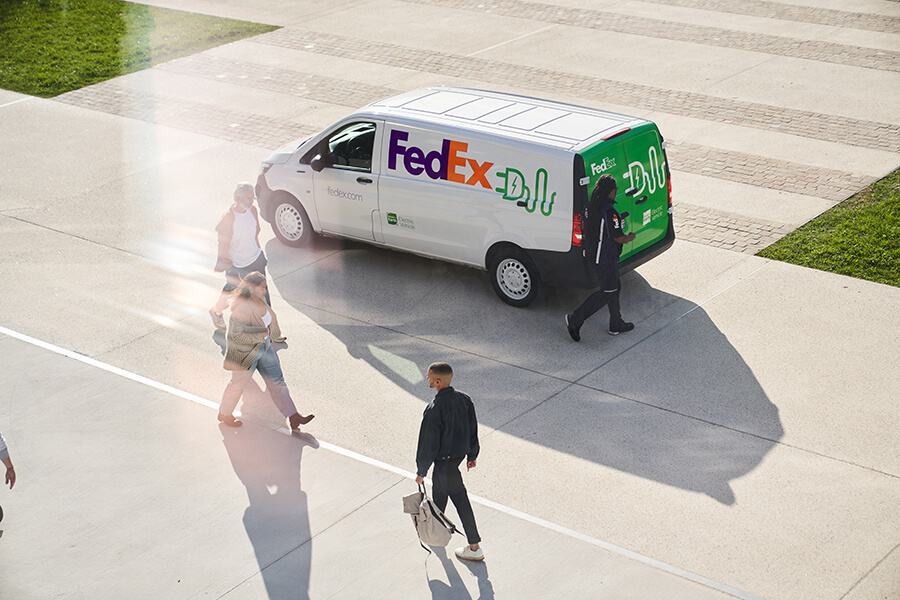
Last-mile delivery is on the rise thanks to e-commerce growth. By making the move to all-electric delivery vehicles, the logistics and transportation sector as a whole can help advance emissions reduction goals.
As the world pushes for more sustainable practices, businesses also need data-driven insights to inform their ESG strategies. An innovative tool they can take advantage of is FedEx® Sustainability Insights, which uses near-real-time FedEx network data to estimate CO2e emissions. FedEx customers can download reports for better visibility of emissions within their supply chains.
Vehicle electrification is a crucial part of our roadmap to contribute to a greener world. For more information on our global electrification program, head here.
As the world pushes for more sustainable practices, businesses also need data-driven insights to inform their ESG strategies. An innovative tool they can take advantage of is FedEx® Sustainability Insights, which uses near-real-time FedEx network data to estimate CO2e emissions. FedEx customers can download reports for better visibility of emissions within their supply chains.
Vehicle electrification is a crucial part of our roadmap to contribute to a greener world. For more information on our global electrification program, head here.
***








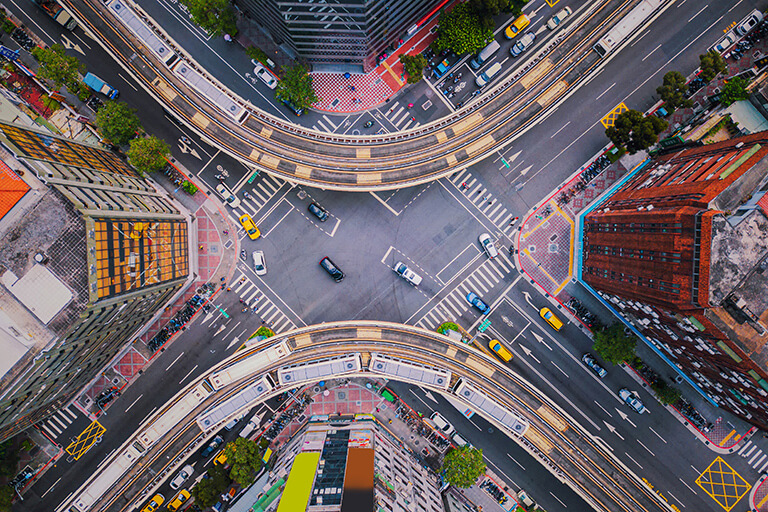




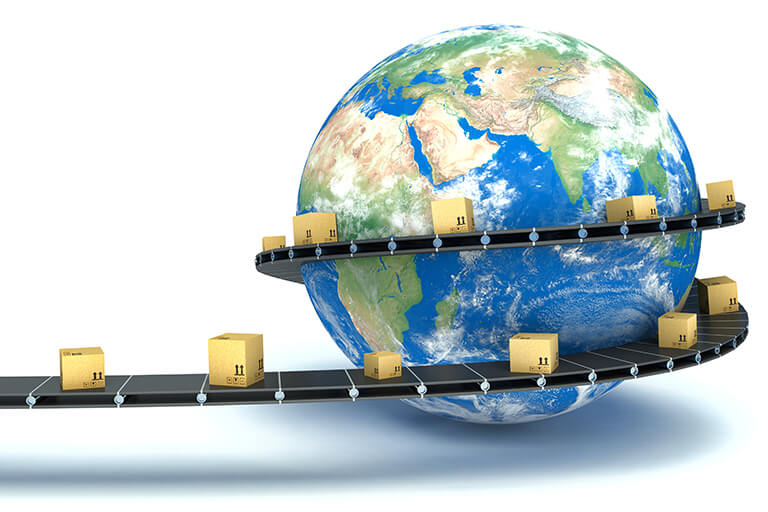



 The Latest
The Latest